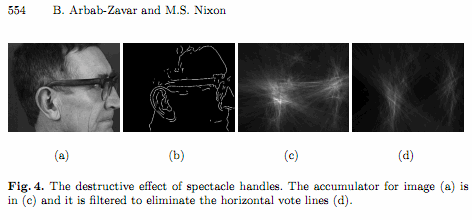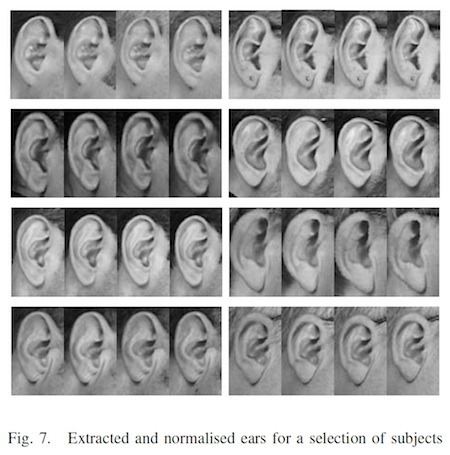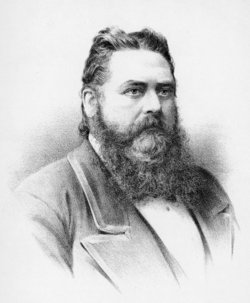Marc Abrahams's Blog, page 397
June 11, 2014
Progress in dog silencing
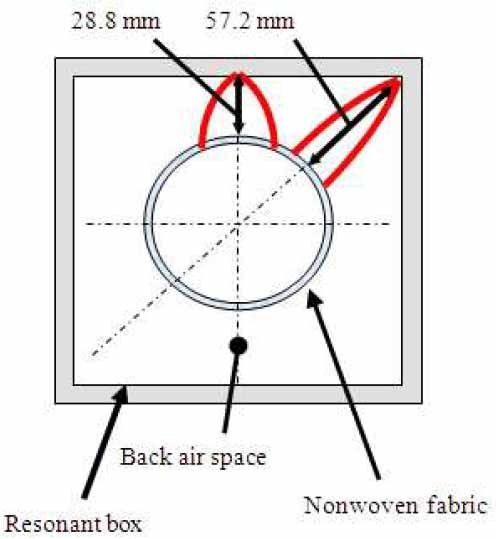 Many types of silencer are already commercially available – trumpet silencers, gun silencers, social media silencers & etc – now there is a new variant, a dog silencer (proposed by a research team at Niigata University, Japan) which can help to attenuate nuisance dog barks, especially at kennels.
Many types of silencer are already commercially available – trumpet silencers, gun silencers, social media silencers & etc – now there is a new variant, a dog silencer (proposed by a research team at Niigata University, Japan) which can help to attenuate nuisance dog barks, especially at kennels.
“This study is related to the use of natural ventilation silencers for the howling and barking (hereafter referred to as ‘barking’) of dogs.”
“[...] we present the results of silencing by throttle effect using tail-pipe.”
The silencer can achieve bark-reduction of around 4dB, or, with a new modification, up to 10dB (or, if you prefer, 1B)
Shuichi Sakamoto, Yuichi Toyoshima, Nobuaki Murayama, Toru Miyairi, Akira Hoshino, and Takatsune Narumi present Sound Attenuation Devices for Dogs Barking (Estimation of Aperture Ratio and Experimental Study of Silencer). In: International Journal of Mechanical Engineering and Applications.Vol. 2, No. 1, 2014, pp. 18-24.

June 10, 2014
Of powered paper airplanes, and the great outdoors
Paper airplanes are a tradition at the annual Ig Nobel Prize ceremony, dating back to the ceremony’s earliest years. Technology has now advanced to the point where it necessary, for safety, to place a technological limitation on ceremonial flight.
An inventive little tiny leap in electromechanical engineering has now brought powered flight — that is powered by other than human arm-and-wrist action — to the realm of paper airplanes. The Wall Street Journal carries a rollicking account of one such aircraft:
It took Chuck Pell less than a minute to build his drone. He folded a piece of paper 11 times, clipped on a battery-powered plastic propeller and rudder, then opened an app on his iPhone. Next he flung the aircraft skyward, steering it above the trees with turns of his phone. The plane soared out of sight. It’s a good technology, according to Mr. Pell, who has suffered plenty of nose dives. It just “needs more pilot training.” … The PowerUp 3.0, brainchild of former Israeli Air Force pilot Shai Goitein, is a lightweight guidance-and-propulsion system powered by a dime-size battery. It clips onto origami aircraft and connects to iPhones using Bluetooth, transforming them into remote-control drones.
Wonderful as they are when flown in the wild, the PowerUp and its like will — alas! — not be welcome in the theater during the Ig Nobel Prize ceremony. If you are coming to the ceremony, do feel free to bring paper — but do not bring motors, weights, or other auxiliary doohickies — for safe paper-airplane folding and flying.
Here’s video of the PowerUp people’s thrilling kickstarter (that’s how they funded some of the development) campaign:
(Thanks to investigator Betsy Devine for bringing this to our attention.)

Study: Hold the Chicken (for 10 minutes, if you like)
Another breakthrough discovery about students, cooked chicken, and short time duration:
“Analysis of the Effect That Holding Time Has on the Perceived Sensory Quality and Acceptability of Poached Chicken,” Gregory S. Jones, Anderson Bouton, Krystal L. Jones, Andrew C. Cauble, Lightsey Laffitte, Paul Dawson, Julia Sharp & Margaret D. Condrasky, Journal of Culinary Science & Technology, Volume 10, Issue 3, 2012, pp. 259-70. (Thanks to investigator Neil Martin for bringing this to our attention.) The authors, at Clemson University, report:
“Gas chromatography–mass spectrometry (GC-MS) analyses were used to identify volatile compounds, and three compounds (hexanal, dimethyl sulfide, and propanal) were shown to have changed consistently, which may impact the flavor of chicken. A triangle test and demographic survey were conducted using an untrained panel to determine the perceived effect of a 10-min holding time on chicken flavor. The results showed that college students are unable to detect a difference between chicken held for 1 or 10 min.”

June 9, 2014
Thai Dove Cooing Contests – an analysis
Some might say that despite their popularity, Thai dove-cooing contests, which have now been held for more than 30 years, have not received the academic attention they deserve. Either way, things changed with the 2005 (#9) edition of the journal MANUSYA:Journal of Humanities (a publication of Chulalongkorn University in Bangkok, Thailand)  in which Professor Wanni Wibulswasdi Anderson [pictured] of the Department of Anthropology and Ethnic Studies, at Brown University, Rhode Island, US, presented a paper which covers the history of, the methodology of and the the sociological implications of the contests :‘Beyond the Cockfight: Masculinity and the Thai Dove-Cooing Contest’
in which Professor Wanni Wibulswasdi Anderson [pictured] of the Department of Anthropology and Ethnic Studies, at Brown University, Rhode Island, US, presented a paper which covers the history of, the methodology of and the the sociological implications of the contests :‘Beyond the Cockfight: Masculinity and the Thai Dove-Cooing Contest’
“Doves in the contest are classified into 3 categories, based on the tonal characteristics of their cooing: low pitch, medium pitch, and high pitch. Each dove sings individualistic songs. The singing of each dove is listened to for one minute by two judges, each judge at a different interval. The melodic beauty of the cooing is evaluated and judged as a series of notes or movements: beginning movement, middle movement and end movement.”
Improbable has not been able to find up to date information on the contest, but here are the results of the 2006 competition.
BONUS (somewhat related) Pigeon Ping Pong competition – as implemented by the late professor Burrhus Frederic Skinner.

This year’s special Dead Duck Day Message
June 5th 2014 was the 19th Dead Duck Day (here is a full, ilustrated report). Since 2010 a leading scientist or science writer is invited to send in the Special Dead Duck Day Message. So far, over the years, Daniel Klem jr, Patricia Brennan, Tim Birkhead and Carin Bondar have contributed. This year’s special DDD message was sent in by Linda Lombardi (pictured below), author of the book (and blog) Animals Behaving Badly. The message was read aloud to the assembled crowd:
Human beings have the strange idea that no other animal has sex solely for pleasure. But if our fellow creatures only care about the perpetuation of the species, why do they do it in so many ways that don’t result in babies? From manatees to manakins, all kinds of animals get it on with members of the same sex, and many have figured out that if you’ve got a stick, a rock, or a prehensile tail, who needs a partner?
As I collected material like this for my book Animals Behaving Badly from the comfort of my office, I came to admire the people who observe and report the sordid truth about the sex lives of the animal kingdom. When I read about a black-winged stilt pleasuring itself with a piece of driftwood, twenty or thirty times at a go, every thirty seconds, I thought about the researcher who carefully recorded this data. Were her feet wet? Was she regretting her decision not to go to medical school instead?
But no one inspired me more than the man who had the fortitude to observe for a full seventy-five minutes the spectacle of the homosexual rape of a dead duck – and then, because it was time for dinner, said, Enough is enough, collected his specimen, and went home. Kees Moeliker knows that if we all waited to eat till animals stopped behaving badly, we’d starve to death. And if that’s their wicked plan to drive the human race to extinction, he won’t let them get away with it. [Linda Lombardi, June 5th 2014]
A full report of the 19th Dead Duck Day, including photographs by Anjès Gesink, can be read and seen here. For a brief history of Dead Duck Day, visit www.deadduckday.com.
BONUS [possibly unrelated]: “We Are The World”:

June 8, 2014
Dan Graur joins the Luxuriant Former Hair Club for Scientists (LFHCfS).
Dan Graur has joined the Luxuriant Former Hair Club for Scientists (LFHCfS). He says:
Thirty years ago my brain started growing rapidly, thus pushing the hair roots outward. I am currently much wiser than I was as a doctoral student. Interestingly, all my male Ph.D. students also show signs of brain growth.
Dan Graur, Ph.D., LFHCfS
John and Rebecca Moores Professor
Department of Biology & Biochemistry
University of Houston
Houston, Texas, USA

An academic squint at mermaids
Choosing to step in roundabout fashion into the question of the mermaid, Deep Sea News begins its mermaid essay by saying:
“It is hard to know where to start in describing Karl Banse, professor emeritus at the University of Washington. He is one of the world’s leading biological oceanography…. In 1998, the American Society for Limnology and Oceanography awarded him the A.C. Redfield Lifetime Achievement Award…”
After only brief further ado, the essay gets to the point:
Perhaps his most overlooked work however is on mermaids. In 1990 the journal Limnology and Oceanography published Bane’s paper “Mermaids – their biology, culture, and demise” (freely accessible here). The paper is an abbreviated version of a talk Banse delivered in 1989 at a symposium held in honor of his 60th birthday. Rumors in the oceanographic back circles is that lecture and subsequent publication were met with, ahem, raised eyebrows. After all, the discussion of the science of a fictitious creature is not proper for either a serious scientific conference or publication.
Here’s further detail from the paper:
(Thanks to investigator Sally Shelton for bringing this to our attention.)

June 6, 2014
The Case of the Four Goodmans
Our Multiplicity of Authors project gains a four-Goodman item (thanks to investigator Dorothy Petersen):

Allen Goodman
“A Few Goodmen: Surname-Sharing Economist Coauthors,” Allen C. Goodman [Wayne State University], Joshua Goodman [Harvard University], Lucas Goodman [University of Maryland], Sarena Goodman [Federal Reserve Board], June 5, 2014. The authors explain:
“We explore the phenomenon of coauthorship by economists who share a surname. Prior research has included at most three economist coauthors who share a surname. Ours is the first paper to have four economist coauthors who share a surname, as well as the first where such coauthors are unrelated by marriage or blood.”

Joshua Goodman
The study’s reference list includes several less numerous co-author collaborations. Among them:
Ahlin, C. and P. Ahlin (2013). Product differentiation under congestion: Hotelling was right. Economic Inquiry 51(3), 1750–1763.
Dal Bo, E. and P. Dal Bo (2011). Workers, warriors, and criminals: social conflict in general equilibrium. Journal of the European Economic Association 9(4), 646–677.
Friedman, M. and R. Friedman (1990). Free to choose: A personal statement. Houghton Mifflin Harcourt.

Sarena Goodman
Goodman, A. C. and J. L. Goodman Jr (1997). The co-op discount. The Journal of Real Estate Finance and Economics 14(1-2), 223–233.
Kehoe, P. and T. Kehoe (1995). A primer on static applied general equilibriummodels. In Modeling North American Economic Integration, pp. 1–31. Springer.
Modigliani, F. and L. Modigliani (1997). Risk-adjusted performance. The Journal of Portfolio Management 23(2), 45–54.
Ostrom, V. and E. Ostrom (1999). Public goods and public choices. In Polycentricity and Local Public Economies. Readings from the Workshop in Political Theory and Policy Analysis, pp. 75–105. Ed. Michael McGinnis, Ann Arbor.-University of Michigan Press.
Pope, D. and J. Pope (2009). The impact of college sports success on the quantity and quality of student applications. Southern Economic Journal, 750–780.
Ramey, G. and V. A. Ramey (2010). The rug rat race. Brookings Papers on Economic Activity, 129–176.
Reinhart, C. and V. Reinhart (2010). After the fall. Working Paper 16334, National Bureau of Economic Research.
Romer, C. and D. Romer (2013). The most dangerous idea in federal reserve history: Monetary policy doesn’t matter. The American Economic Review 103(3), 55–60.
Sexton, S. E. and A. L. Sexton (2014). Conspicuous conservation: The Prius halo and willingness to pay for environmental bona fides. Journal of Environmental Economics and Management 67(3), 303 – 317.
Skarbek, D., E. Skarbek, B. Skarbek, and E. Skarbek (2012). Sweatshops, opportunity costs, and non-monetary compensation: Evidence from El Salvador. American Journal of Economics and Sociology 71(3), 539–561.
Stinebrickner, R. and T. Stinebrickner (2014). A major in science? Initial beliefs and final outcomes for college major and dropout. The Review of Economic Studies 81(1), 426–472.
Summers, L. and V. Summers (1989). When financial markets work too well: a cautious case for a securities transactions tax. Journal of Financial Services Research 3(2-3), 261–286.
Tremblay, C. H., M. J. Tremblay, and V. J. Tremblay (2011). A general Cournot-Bertrand model with homogeneous goods. Theoretical Economics Letters 1, 38.
Ulph, A. and D. Ulph (2013). Optimal climate change policies when governments cannot commit. Environmental and Resource Economics 56(2), 161–176.
Van Praag, C. M. and B. M. Van Praag (2008). The benefits of being economics professor A (rather than Z). Economica 75(300), 782–796.
Winkelmann, L. and R. Winkelmann (1998). Why are the unemployed so unhappy? Evidence from panel data. Economica 65(257), 1–15.

The destructive effect of spectacle handles
This illustration demonstrates “the destructive effect of spectacle handles” for computer programs designed to automatically detect and measure the shape of a person’s ear. From one point of view, this shows that you are acting unfairly if you wear eyeglasses to an airport or bank or any other place where you are likely to be constantly monitored, measured and analyzed by technology.
It comes from the study “On Shape-Mediated Enrolment in Ear Biometrics,” Banafshe Arbab-Zavar and Mark S. Nixon, ADVANCES IN VISUAL COMPUTING — Lecture Notes in Computer Science, 2007, Volume 4842, 2007, pp. 549-558. The researchers are at the University of Southampton, UK
BONUS: A related study: Nixon’s “A novel ray analogy for enrolment of ear biometrics.” Here’s a detail from that study:

June 5, 2014
More atropia than ever before!
One day in Victorian England, Dr. John Milner Fothergill (above), who was indeed an eminent physician with many other achievements (and whose weight was as immense as his medical knowledge), accomplished something that merited an item in the March 1878 North Carolina Medical Journal [vol. 1(3): p. 177] all by itself.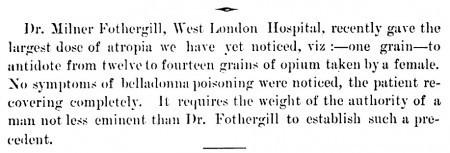
“Atropia”, now called atropine, is still important in medicine. Though it’s an antagonist of muscarinic acetylcholine receptors, not opioid receptors, so it’s not used to treat opiate overdoses.
Were there awards in the 19th century for biggest dose of a drug? Has this ever been in the Guinness Book? It seems the wrong sort of thing to encourage in our physicians.
Follow Amboceptor on Twitter: @AmboceptorBlog

Marc Abrahams's Blog
- Marc Abrahams's profile
- 14 followers





